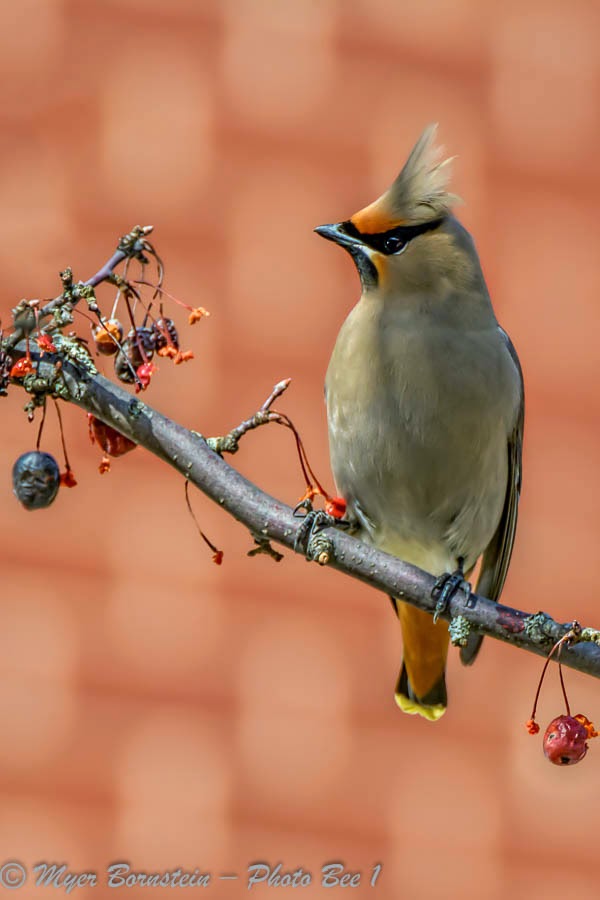%2B_71D7955.jpg) |
| Bohemian Waxwing |
Today, I reached my 699th life bird. On e-Bird and the mass bird list, this month there have been numerous reports of Bohemian waxwings. In fact, on Sunday, March 29, it was reported that they were over 300 Bohemian waxwings present in Gardner, Massachusetts. So today, the kids and I traveled up to Gardner to see if we could find the Bohemian waxwings. They have been reported around the area of Haywood Hospital in Gardner. As we drove up to the hospital, on the left in small trees, we saw the Bohemian waxwings. Finally, after finding a parking spot, we walked back and spent the time photographing the waxwings as they moved back and forth between trees. A number of people stop that cars and asked what we were looking at and we explained what we had found and were photographing, and they were very interested. A few other people arrived and were happy to see the waxwings also.
%2B_71D7779.jpg) |
| Bohemian Waxwing |
%2B_71D7836.jpg) |
| Bohemian Waxwing |
Bohemian waxwing have found circumpolar and they breed in the northern regions of Eurasia are in North America. This fat that the North American subspecies breeds in the northwest, and in north central areas of the continent with it range extending southward into the Rocky Mountains. Apparently this is one of the years that thus Bohemian waxwings had a large irruption. The flock will stay in an area until the food supply runs out. We watched them eating the berries on the trees and there was still a moderate amount the berries present.
%2B_71D7939.jpg) |
| Bohemian Waxwing |
It's description from Wikipedia: "The Bohemian waxwing is a starling-sized bird 19–23 cm (7.5–9 in) in length with a 32–35.5 cm (12.6–14 in) wingspan, and an average weight of 55 g (1.9 oz ] It is short-tailed, mainly brownish-grey, and has a conspicuous crest on its head. The male of the nominate subspecies has a black mask through the eye and a black throat. There is a white streak behind the bill and a white curve below the eye. The lower belly is a rich chestnut color and there are cinnamon-colored areas around the mask. The rump is grey and the tail ends in a bright yellow band with a broad black border above it. The wings are very distinctive; the flight feathers are black and the primaries have markings that produce a yellow stripe and white "fishhooks" on the closed wing. The adult's secondaries end in long red appendages with the sealing wax appearance that gives the bird its English name. The eyes are dark brown, the bill is mainly black, and the legs are dark grey or black. In flight, the waxwing's large flocks, long wings and short tail give some resemblance to the common starling, and its flight is similarly fast and direct. It clambers easily through bushes and trees but only shuffles on the ground..
%2B_71D7957.jpg) |
| Bohemian Waxwing |
%2B_71D7978.jpg) |
| Flock of Bohemian Waxwing in the Tree |
If you have never seen the Bohemian waxwing, now is the time to get up to Gardner, Massachusetts, and searched around the hospital to find them before they leave on their migration.
%2B_71D7955.jpg)
%2B_71D7779.jpg)
%2B_71D7836.jpg)
%2B_71D7939.jpg)
%2B_71D7957.jpg)
%2B_71D7978.jpg)

No comments:
Post a Comment